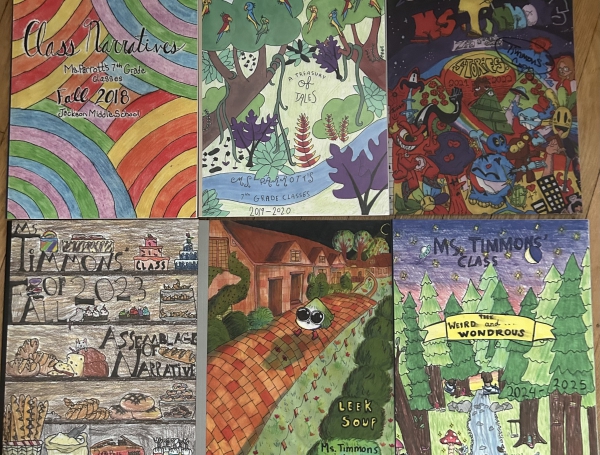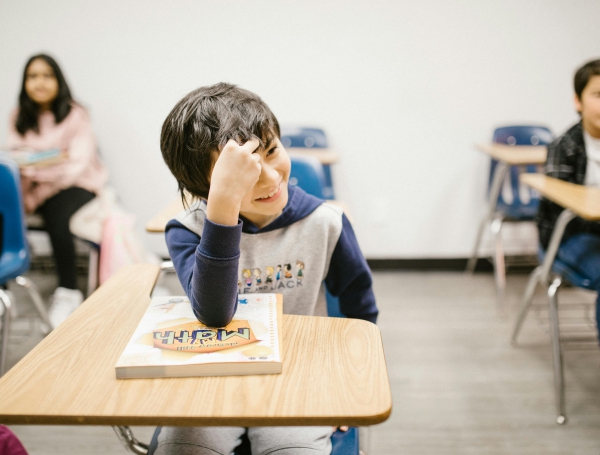

Helping Students of Mixed Abilities Achieve in the Special Ed Math Classroom
December 24, 2017
There is nothing in the world more that I would want to do as a profession than be a high school teacher. I love my job because of one simple reason; I love working with kids and helping them reach their full potential. But being a high school special education teacher has its challenges. We’ve all heard the statistics that 50% of special education teachers leave the profession within 5 years. I am entering my 17th year as a special education teacher and while I have had my trying times, I am always reminded of why I chose this profession in the first place.
I am currently serving as resource room teacher at the high school that I attended 20+ years ago. For the past 2 years, I have been teaching parallel support math classes for special education students who are also in either a regular education Algebra 1 class or a regular education Geometry class. Because our district is on a block schedule, my parallel support classes are on the opposite days of student’s general education math classes so that they can receive math instruction every day. Each year, I face the challenge of having students with a wide range of abilities, from nearly at grade level students who need just a little additional support with grade level content to students coming to high school with massive deficits, performing near the 3rd or 4th grade level in basic number sense. Along with the academic challenges, it seems as though each year I have a class that challenges my sanity with emotional and behavioral needs from a large pocket of the class. Teaching at a low SES (Socioeconomic status) school means that each year I have a large population of students in my class who are coming to school hungry, sometimes homeless, and/or lacking the nurturing support and structure kids need at home. All the while, the expectation is that each and every student meet state standards.
This past year, I decided I was going to push myself out of my comfort zone and attempt to implement technology more in my classroom than I ever have before. Given that I haven’t had a home computer for close to a decade, increasing use of technology at school can be a bit anxiety-inducing. Two years ago, our school adopted a new online interactive math curriculum (HMH), dropping the use of textbooks completely. One major change I implemented was, I kept a running calendar of each day’s events on my class’s Schoology page. Schoology is a learning management system where I can keep all of my other online resources organized for students to access. Hyperlinks were included on the calendar, allowing students to open up each assignment with a click of the button. Even when students were given worksheets, they would have access to that
worksheet from home in case they lost it and needed to print things off.
The biggest endeavor I decided to take on this year was I decided to create interactive notes that tied in directly to the students' general education curriculum. What I was finding was that most students weren’t taking advantage of the wonderful online materials available to each of them through the HMH curriculum. Another major challenge that I faced in my classes was that, in the day and age of constant technology, I feel like students attention spans are getting shorter and shorter. This makes it very hard to get full attention for even 5 minutes. On top of that, because my student’s achievement gaps are so diverse, whole group instruction may be beneficial for a certain percentage of class but what about the high achievers or the students who are so far below that the instruction goes right over their heads?
So within my interactive notes, I included key prerequisite terms and skills needed for the day's lesson. Then, with each current skill, I included fill-in- the blank notes along with links to videos from the HMH curriculum. The results were amazing. Instead of the traditional teacher-directed instruction, students would log on to Schoology and get right into the day’s lesson, moving at their own speed. This allowed me to be free to check in with the students I know really need the assistance and one on one help. At the end of the notes, I would assign a braingenie.com assignment. Braingenie.com allows me to see real-time results on assigned tasks, once again, allowing me to check in with the students who really need the assistance.
Like most teachers, when I got to the end of the school year I reflected back on the year and wondered if it was a success. As a teacher, especially as a special education teacher, you don’t always see the rewards of your effort from one summative test at the end of the school year. So I decided I would create an end of the school year online SurveyMonkey to see how students felt about the school year and my teaching practices. Overall, I was pleased with the results. 75% of students found the online daily agenda beneficial. About the same percentage of students felt the interactive notes were useful. But the response that I was most proud of was to one of the most important questions that any teacher could ask; do you feel that Mr. Glaze cares about you? 35 out of 37 students stated "yes." While it makes me want to do better getting two responses of no, I feel reassured that I am reaching my students even though I can’t always measure it throughout the whirlwind of a school year.
This guest post was written by Teacher, Marcus Glaze, after completing online continuing education course, Online Math Tutorials: Khan Academy & More.




